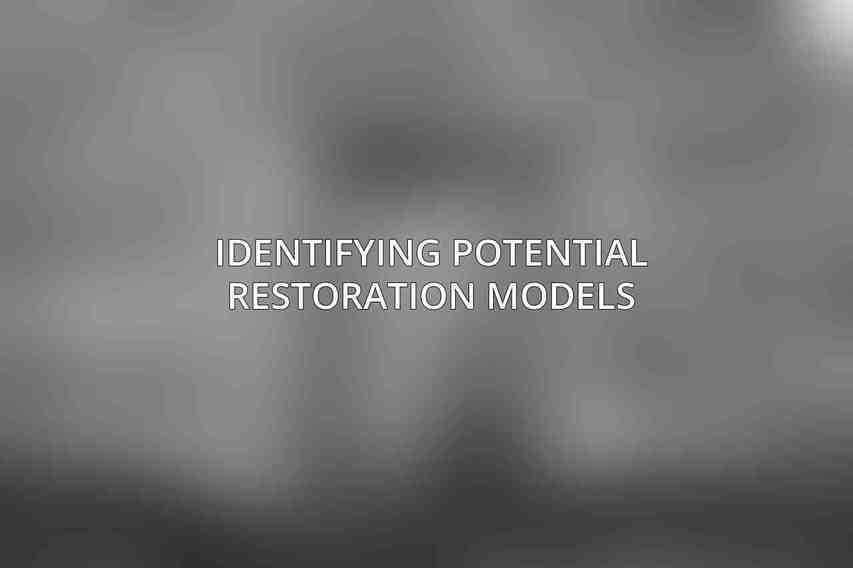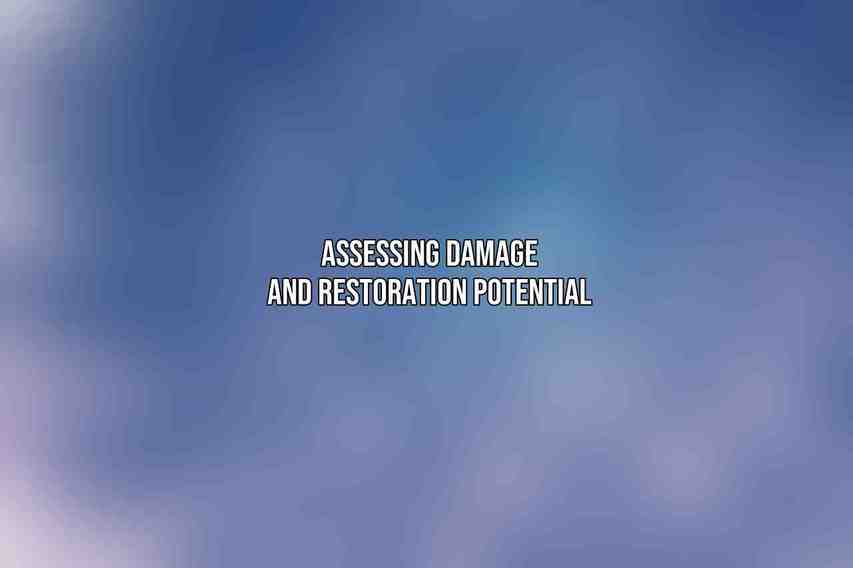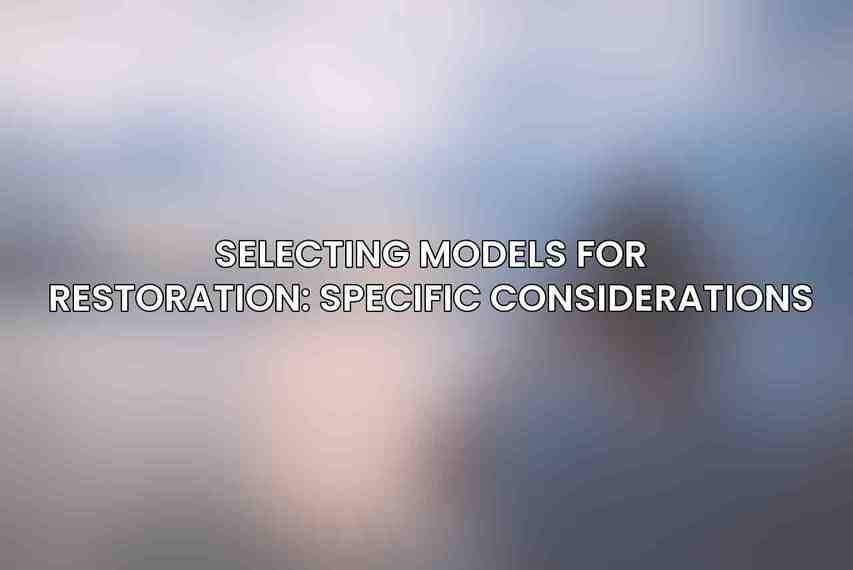Diecast models have long been cherished by collectors for their intricate details and charm. The art of restoring these models not only preserves their history but also adds value to these miniature treasures. Restoring diecast models can be a fulfilling hobby that appeals to enthusiasts of all ages, offering a blend of craftsmanship and creativity. Whether you are new to the world of diecast models or a seasoned collector looking to delve into restoration, this beginner’s guide will provide you with essential insights to kickstart your restoration journey.
| Feature | Diecast | ||||||||||||||||||||||||||||||||||||||||||||||||||||||||||||||||||||||||||||||||||||||||||||||||||
|---|---|---|---|---|---|---|---|---|---|---|---|---|---|---|---|---|---|---|---|---|---|---|---|---|---|---|---|---|---|---|---|---|---|---|---|---|---|---|---|---|---|---|---|---|---|---|---|---|---|---|---|---|---|---|---|---|---|---|---|---|---|---|---|---|---|---|---|---|---|---|---|---|---|---|---|---|---|---|---|---|---|---|---|---|---|---|---|---|---|---|---|---|---|---|---|---|---|---|---|
| Material | Zinc alloy | ||||||||||||||||||||||||||||||||||||||||||||||||||||||||||||||||||||||||||||||||||||||||||||||||||
| Scale | 1:18, 1:24, 1:32, 1:43, 1:64 | ||||||||||||||||||||||||||||||||||||||||||||||||||||||||||||||||||||||||||||||||||||||||||||||||||
| Models | Cars, trucks, motorcycles, airplanes, military vehicles | ||||||||||||||||||||||||||||||||||||||||||||||||||||||||||||||||||||||||||||||||||||||||||||||||||
| Details | Opening doors, hoods, and trunks; functional steering and suspension | ||||||||||||||||||||||||||||||||||||||||||||||||||||||||||||||||||||||||||||||||||||||||||||||||||
| Price | $20-$200 | ||||||||||||||||||||||||||||||||||||||||||||||||||||||||||||||||||||||||||||||||||||||||||||||||||
| Availability | Online and hobby stores | ||||||||||||||||||||||||||||||||||||||||||||||||||||||||||||||||||||||||||||||||||||||||||||||||||
| Website | Diecast Models Wholesale | ||||||||||||||||||||||||||||||||||||||||||||||||||||||||||||||||||||||||||||||||||||||||||||||||||
| Visit Diecast | |||||||||||||||||||||||||||||||||||||||||||||||||||||||||||||||||||||||||||||||||||||||||||||||||||
Overview of Diecast Models and Restoration Appeal
Diecast models are miniature replicas of vehicles, machinery, and other objects that are made using the die-casting method. These models are typically composed of metal, such as zinc, aluminum, or plastic, and showcase intricate detailing that mimics the original vehicles or objects. The appeal of restoring diecast models lies in the opportunity to breathe new life into these miniature pieces of history. By restoring a diecast model, collectors can not only revitalize a neglected piece but also enhance its value and authenticity.
Restoring diecast models offers a host of benefits beyond just aesthetic improvement. One of the key advantages is the preservation of history encapsulated in these models. By restoring and maintaining diecast models, collectors contribute to the conservation of vintage pieces for future generations to admire. Additionally, restoration often leads to a tangible increase in the value of the model, making it a rewarding endeavor for collectors looking to build a valuable collection. Lastly, the process of restoration provides a sense of personal fulfillment and achievement as collectors witness the transformation of a worn-out model into a pristine showcase piece.
Identifying Potential Restoration Models

When embarking on a diecast model restoration project, the first step is to identify suitable models for restoration. There are various sources where collectors can find potential models, ranging from online marketplaces like eBay and Etsy to local flea markets and garage sales. These avenues often offer a diverse range of diecast models in different conditions, providing ample opportunities for collectors to discover hidden gems.
In selecting a model for restoration, several criteria should be considered to ensure a successful project. Factors such as the scale of the model, the brand reputation, rarity in the market, current condition, and potential future value play a crucial role in the decision-making process. Collectors should also conduct thorough research to estimate the value of a model based on its age, rarity, demand among collectors, and current market trends. This information can guide collectors in identifying models that have the potential for restoration and value appreciation.
To identify valuable diecast models worthy of restoration, collectors can explore various resources such as collectors’ guides, online forums, and expert consultations. Researching the background and history of a model can provide valuable insights into its significance and desirability among collectors. By leveraging the knowledge and expertise of seasoned collectors and restoration professionals, enthusiasts can make informed decisions when selecting models for restoration, ensuring that their efforts yield rewarding outcomes.
Assessing Damage and Restoration Potential

Before diving into the restoration process, it is essential to assess the extent of damage present on a diecast model and evaluate its restoration potential. Common types of damage found in diecast models include paint chips, dings, broken or missing parts, and rust accumulation. By carefully inspecting the model, collectors can determine the severity of the damage and identify areas that require repair and restoration.
When assessing the damage, collectors should pay close attention to the model’s structural integrity and overall condition. Evaluating the repairability of damaged components, such as wheels, axles, and body parts, is crucial in determining the feasibility of restoration. Factors like the availability of replacement parts, the complexity of repairs needed, and the overall condition of the model influence its restoration potential. Consulting with experienced restorers or restoration professionals can provide valuable insights into the required repairs, estimated costs, and challenges that may arise during the restoration process.
Selecting Models for Restoration: Specific Considerations

Beginner-friendly models
selecting entry-level projects is recommended. These models typically feature common types of damage that are relatively easy to address, with readily obtainable replacement parts. Popular examples of beginner-friendly models include 1:64 scale Hot Wheels cars and 1:43 scale Matchbox vehicles. These models serve as excellent starting points for beginners to hone their restoration skills and gain confidence in tackling more intricate projects.
Advanced models
Experienced restorers seeking a challenge may opt for advanced models that exhibit complex damage and require specialized restoration techniques. Models in larger scales, such as 1:18 diecast replicas, as well as rare and vintage pieces, present an opportunity for seasoned collectors to showcase their restoration prowess. These models often require extensive repairs, custom fabrication of parts, and meticulous detailing to achieve a high-quality restoration.
Personal preferences
When selecting models for restoration, collectors are encouraged to consider their personal preferences, interests, and aesthetic preferences. Whether driven by nostalgia for a particular brand or model, a fascination with a specific era of automotive design, or simply a love for a particular type of vehicle, choosing models that resonate personally can enhance the enjoyment and satisfaction derived from the restoration process.
Diecast Model Restoration Tools and Resources
To embark on a successful diecast model restoration project, collectors need access to a range of tools and resources to facilitate the repair and refurbishment process. Essential tools for diecast model restoration include screwdrivers, pliers, paintbrushes, and sanding paper, which are indispensable for disassembly, painting, and surface preparation. Specialized tools like micro-drills, airbrushes, and model glue cater to more intricate restoration tasks, such as drilling tiny holes, precision painting, and bonding delicate parts.
In addition to physical tools, collectors can benefit from a wealth of online resources that provide valuable guidance and support throughout the restoration journey. Online forums dedicated to diecast model restoration offer a platform for enthusiasts to share knowledge, seek advice, and showcase their work. Tutorial videos, restoration blogs, and step-by-step guides provide valuable insights into restoration techniques, tips, and best practices. By leveraging these online resources, collectors can expand their skills, learn new restoration methods, and stay informed about the latest trends in diecast model restoration.
For collectors seeking reliable restoration tools and supplies, Diecast Models Wholesale offers a range of restoration tools tailored to meet the needs of enthusiasts at different skill levels. From paint sets and detailing brushes to polishing compounds and adhesives, these restoration supplies are designed to support collectors in achieving professional-quality restorations. Hot Wheels enthusiasts can explore restoration kits available through the Hot Wheels Collectors website, providing comprehensive tools and materials specifically designed for restoring Hot Wheels diecast cars. Additionally, hobbyists can access a variety of restoration guides and tips on platforms like HobbyTalk, offering insights into advanced restoration techniques and project-specific advice.
selecting diecast models for restoration is a rewarding endeavor that combines craftsmanship, creativity, and passion for collecting. By identifying potential restoration models, assessing damage and restoration potential, and choosing models based on specific considerations, collectors can embark on fulfilling restoration projects that breathe new life into vintage pieces. With a range of tools, resources, and expert guidance available, enthusiasts can explore the world of diecast model restoration with confidence and enthusiasm. Whether you are a beginner looking to start your restoration journey or an experienced collector seeking challenging projects, the world of diecast model restoration awaits with a wealth of opportunities for creativity and discovery. Happy restoring!
Frequently Asked Questions
What are diecast models?
Diecast models are collectible miniature replicas of vehicles made from die-casting process, usually in various scales such as 1:18, 1:24, or 1:64.
What tools do I need for restoring diecast models?
Some essential tools for restoring diecast models include hobby knives, sandpaper, paintbrushes, primers, paints, and clear coat sealants.
How do I choose the right diecast model for restoration?
When selecting a diecast model for restoration, consider factors like the model’s condition, availability of replacement parts, and your level of experience in restoration work.
Where can I find diecast models for restoration?
You can find diecast models for restoration at hobby shops, online marketplaces, garage sales, estate sales, and collector’s conventions.
Is restoring diecast models a difficult process for beginners?
Restoring diecast models can be a challenging but rewarding process for beginners. With patience, practice, and attention to detail, you can achieve satisfying results in your restoration projects.

